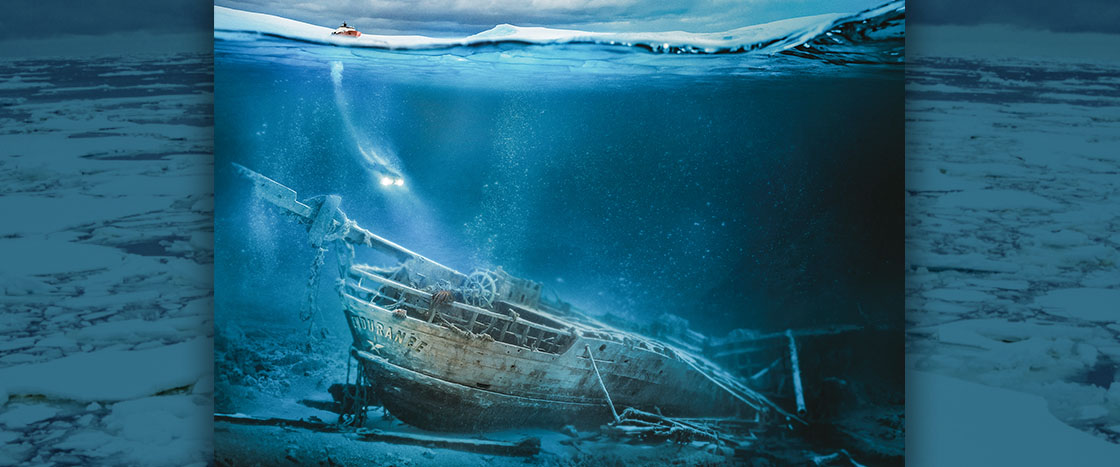Frank Hurley/Scott Polar Research Institute, University of Cambridge/Getty Images
When the end finally came, it came quickly.
It was November 21, 1915. Explorer Ernest Shackleton was in the heart of the Weddell Sea, part of the icy ocean that surrounds the continent of Antarctica. And his ship was sinking.
More than a year earlier, Shackleton and his crew had set sail for Antarctica on a ship called the Endurance. His goal was to be the first person to walk across the entire continent. But in January, just five months into their journey, their ship had become trapped in the thick slabs of ice covering the sea.
By October, the 28 men had been forced to leave the Endurance and set up camp on the sea’s frozen surface.
Now, from their camp on the ice, Shackleton spied the ship beginning to sink.
“She’s going, boys!” he shouted. The men gathered to watch as the mighty ship was swallowed up by the sea in just minutes. Then the ice quickly closed over it again, as if the ship had never existed.
Shackleton and his crew were alone in the coldest, harshest, emptiest place on the planet. There were no other people for hundreds of miles.
About 10,000 feet below their boots, their ship lay sealed in an icy tomb. It seemed that the Endurance would be lost forever . . . until more than 100 years later, when another crew went looking for it.
When the end finally came, it came quickly.
It was November, 1915. Explorer Ernest Shackleton was in the middle of the Weddell Sea, part of the icy ocean around the continent of Antarctica. And his ship was sinking.
More than a year earlier, Shackleton and his crew had left for Antarctica on a ship called the Endurance. His goal was to be the first person to walk across the whole continent. But in January, just five months into the crew’s journey, their ship had become trapped in the thick ice covering the sea.
By October, the 28 men had to leave the Endurance. They camped on the sea’s frozen surface.
Now, from their camp on the ice, Shackleton saw the ship starting to sink.
“She’s going, boys!” he shouted. The men watched as the ship sank into the sea in minutes. Then the ice quickly closed over it again.
Shackleton and his crew were alone in the coldest, emptiest place on the planet. There were no other people for hundreds of miles.
Their ship was 10,000 feet below them. It seemed the Endurance would be lost forever. That was until more than 100 years later, when another crew went looking for it.


